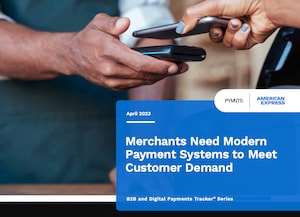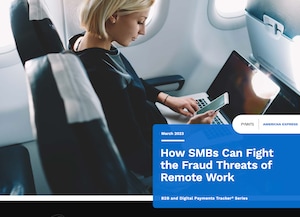July 23, 2021
How to Use Influencer Marketing While Staying True to Your Brand

Are you seeing other brands in your industry make the foray into influencer marketing?
If you're tempted to give it a try, you're probably wondering how to make the most of this growing marketing strategy. Successful influencer marketing is all about knowing the result you want to achieve before you start a campaign. This helps you identify the best influencers for your brand and measure the results of your efforts.
It's a three-step process that will help any influencer campaign you launch have a higher likelihood of paying off (instead of getting filed away under "hard lessons learned").
If you need 25 percent of an influencer's fans to become your customer to justify the cost, then [the campaign] probably isn't worth it.
—Josh Stutt, founder, ABCD E-Commerce
Know Your Purpose
Josh Stutt, founder of online marketing agency ABCD E-Commerce, frequently coordinates influencer campaigns for his clients. At the early stages of every campaign, he helps clients get clear on the outcomes they want.
"Are you trying to sell your product or gain followers or something else? Decide on your campaign goals and what your available resources are," Stutt advises. By understanding your resources, he says, you can determine whether the results you want are realistic.
If you need an example, take a look at the influencer strategy run by Credit Summit, a financial site that helps people eliminate debt. Carter Seuthe, the company's vice president of content, knew that the brand wanted to increase lead flow to their website. "Our organic reach was decent, but we wanted leads who already saw us as vetted by someone they trusted, as trust is a big factor in our business model," he says.
By being clear about their goals, Credit Summit was able to build messaging that gave influencers enough information to speak with authority about their brand. While it took time to locate potential influencers and dial in on just the right messaging, the brand has seen success time and time again. They saw a 22 percent increase in vetted traffic in the first 48 hours after their first video in their initial campaign went live.
Focus on Fit Over Followers
Do you have dreams of instant success the moment a major household name flashes your product on their Instagram account? The reality of influencer marketing is that successful strategies focus more on how an influencer fits with a brand's message and image than their follower count.
Justin Blase, the founder of Ted's Vintage Art, a go-to destination for historic maps, immediately sought out influencer marketplaces when he wanted to give influencer marketing a try. These marketplaces match brands with influencers who have high follower counts, potentially lessening the vetting process for both parties.
Blase found, however, that the quality wasn't all it was cracked up to be. "We had two cases where the influencer went dark on us and we eventually had to request a refund," he says. "In two other cases, the quality of the videos [the influencers] produced were so poor or boring that there was no real value in using them."
Blase found success when he skipped the marketplaces and went straight to the source. Now he knew to be less concerned about the follower count and more interested in people who would dig retro maps and find a way to fit them into their own brands.
He looked for profiles with decent follower counts in spaces related to Victorian homes, man caves, vintage design and other eclectic niches. The fit was fabulous because the selected influencers' followers were already into what Ted's Vintage Art had to offer.
"We then sent a direct message to these profiles asking if they would be willing to give us feedback on our product in exchange for a free one," says Blase. "This started a great dialogue, which led to over half of our engagements resulting in promotion with no fees at all, aside from the cost of free product."
Sales rose significantly compared to prior influencer outreach—and all because he started a conversation with people who already liked what his company had to offer.
Measure Results
Going after influencers without a way to measure your results is a sure-fire way to make both your campaign and budget go bust.
Stutt of ABCD E-Commerce suggests that brands measure before and after they start an influencer campaign to create the best gauge for success. Before launch, think about how much revenue you'd need to generate from the campaign to consider it a success."
Then, figure out what percentage of the influencer's followers would need to make a purchase [or take the desired action] to hit that number," he says. "Is it realistic? Be honest with yourself. If you need 25 percent of an influencer's fans to become your customer to justify the cost, then [the campaign] probably isn't worth it."
During and after the campaign, Stutt says the easiest way to measure the campaign's efficacy is to create a promo code or vanity URL for your influencer to share with their followers. (If you listen to podcasts, you'll hear this strategy all the time during ad breaks when hosts read the advertiser's website with a slash and the podcast's name at the end.)
The codes and vanity URLs help you tie any sign-ups or sales back to the specific influencer. Just be sure to assign different vanity URLs and codes to each influencer to keep accounting straight.
With the three-step strategy and examples above, you can explore influencer marketing with greater confidence and less confusion. By being clear about your goals, focusing on fit over followers and committing to measuring before, during, and after your campaign, you'll be better able to align your brand with audiences ready to fall in love with what you have to offer.
Photo: Getty Images








